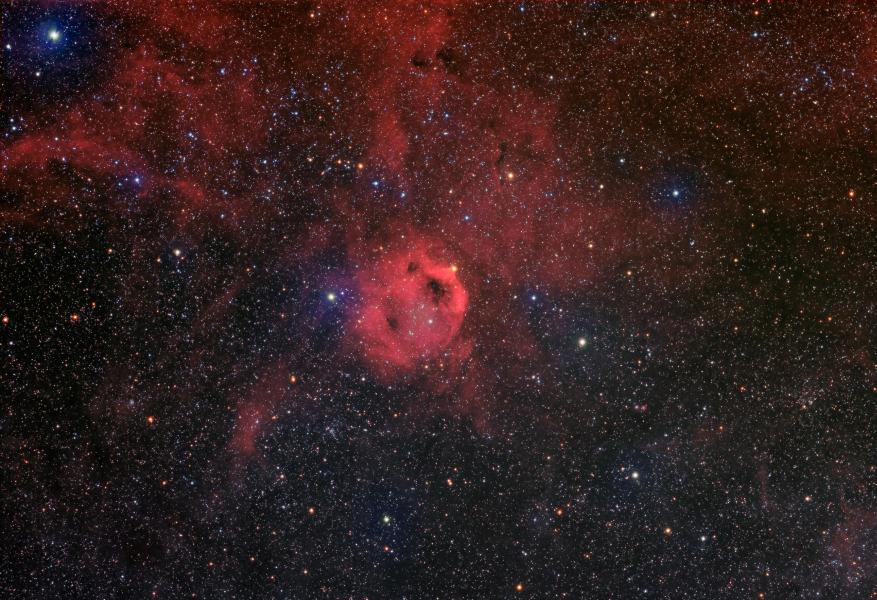Sharpless 173, the "Phantom of the Opera"
Nebula
|
 |
Listening to the soundtrack of the musical "Phantom of the
Opera", I've often thought about the lyrics of the song "Music
of the Night" in the context of astronomy:
Picture this: it's twilight, the sun is setting, stars are shyly
shining through the growing darkness. Slowly, but surely...
"Slowly, gently night unfurls it's splendour
Grasp it, sense it, tremulous and tender
Turn your face away from the garish light of day
Turn your thoughts away from cold unfeeling light
And listen to the music of the night"
That passage almost seems to speak to astronomers as they
anticipate the thrills of seeing the wonders of the heavens
slowly unveiled in the sky above them. Night slowly falls,
sunlight fades aways, stars, planets and DSO's coyly reveal
themselves in the growing darkness. The "Music of the Night"
calls to astronomers not so much audibly but visually as the
beauty of the heavens are revealed regardless of the viewing
aids used: the Milky Way from a dark sky site, larger open star
clusters in binoculars,
deep sky objects with larger telescopes.
In the story of the "Phantom of the Opera", the Phantom
approaches the leading lady as an Angel of Music who trains her
and grooms her into an opera star. Interestingly enough, there
appears to be an "Angel of the Music of the Night" in the
heavens acting as a muse to the astronomers on earth below.
OK, this is just another case of Pareidolia, but hey, where's
the fun in saying "just another cloud in the sky?"
I present to you Sharpless 173, the 173rd entry in Stewart
Sharpless' catalog of ionized glowing hydrogen gas. Its
resemblance to a certain Broadway musical character has given it
the nickname "Phantom of the Opera Nebula".
This object is very, very faint. Some nebulae that I've shot
show great detail through my color filters. This particular
object just barely shows up in my red data even with an hour's
total exposure time. Most of the details visible in the main
nebula were captured using a narrow-band Hydrogen-alpha filter.
As with most such nebulae, Sharpless 173 is associated with
star-forming regions and will disappear over time as the stars
born in or around it blow its gases away.
In the meantime, let us enjoy this object as we ponder upon the
Music of the Night. |
| |
|
Constellation: Cassiopeia |
|
When Visible: August-January |
| Distance:
approximately 8,000 light-years |
| Date:
October - December 2013 |
| Location: Rancho Hidalgo, Animas, NM |
Exposure Details:
H-alpha: 23 x 30 Minutes Binned 1x1
R: 6 x 10 Minutes Binned 1x1
G: 6 x 10 Minutes Binned 1x1
B: 6 x 10 Minutes Binned 1x1
14.5 Hours total exposure time |
| |
| Equipment Used:
Takahashi FSQ-106N on an Astro-Physics AP1200GTO mount. SBIG
STL-11000
camera with 5-position filter wheel and Astrodon filters. Robofocus
focuser. Externally guided with an SBIG
Remote Guide Head on a Borg 50mm refractor. |
| |
| Acquisition Software :
MaximDL, TheSky6, CCDAutopilot |
| Processing Software:
MaximDL, Photoshop CS5, HLVG, Astro Actions by Noel Carboni, IrFanView |
| |
|
|
